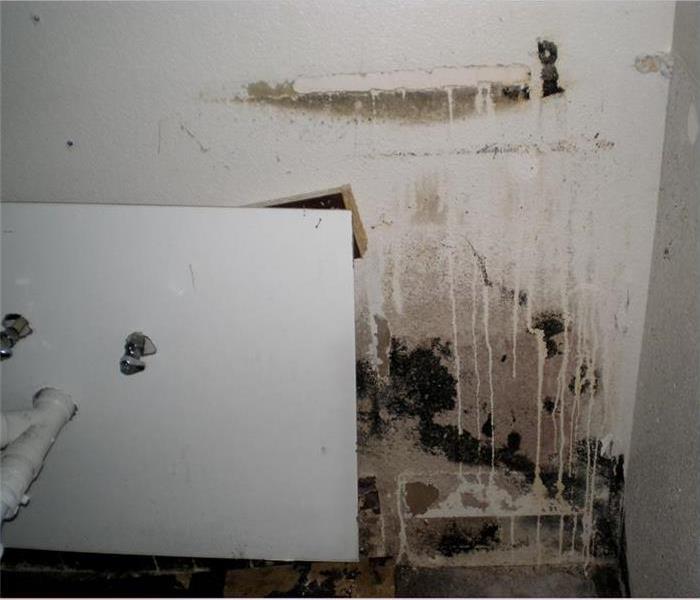How Secondary Damage Can Make Commercial Flooding Worse
3/10/2022 (Permalink)
How Secondary Damage Occurs?
If your business floods, your first concern may be the rising water itself. While this is certainly a problem, it’s also important to avoid secondary damage. The increased levels of humidity in the room can cause black mold to spread. Here are a few ways you can avoid this problem after a flood in Austin, TX:
- Call a restoration company immediately
- Thoroughly clean all damaged items
- Keep an eye out for signs of mold for a few weeks after restoration
It’s essential for business owners to follow each of these steps to stop the damage. Furthermore, understanding how secondary damage occurs can help you avoid it.
Plenty of Humidity
Even a few inches of water can significantly increase the humidity levels in a room. This high humidity means that there is a lot of water in the air. That moisture in the air then sticks to the walls, surfaces, and furniture in the area.
Moisture Leads to Mold
When the water in the air lands on particular surfaces, it can begin to grow black mold. Unfortunately, that means that the mold grows in places where you may not expect it.
How does moisture make mold? Mold spores are all around us. However, without the necessary water levels, they don’t grow into anything dangerous. Once humidity rises in your business, those previously harmless mold spores become a problem.
The Clock is Ticking
The very second water spills into your business, you’re on a timer to prevent mold and other problems. In most cases, you have only 24 to 48 hours until the mold is visible. This is one of the reasons it is important to call a restoration company immediately.
Black mold and other secondary damage can make flooding in your business worse than it already would have been. Be sure to contact a restoration company in Austin, TX as soon as you see signs of flooding and avoid this problem altogether.




 24/7 Emergency Service
24/7 Emergency Service
